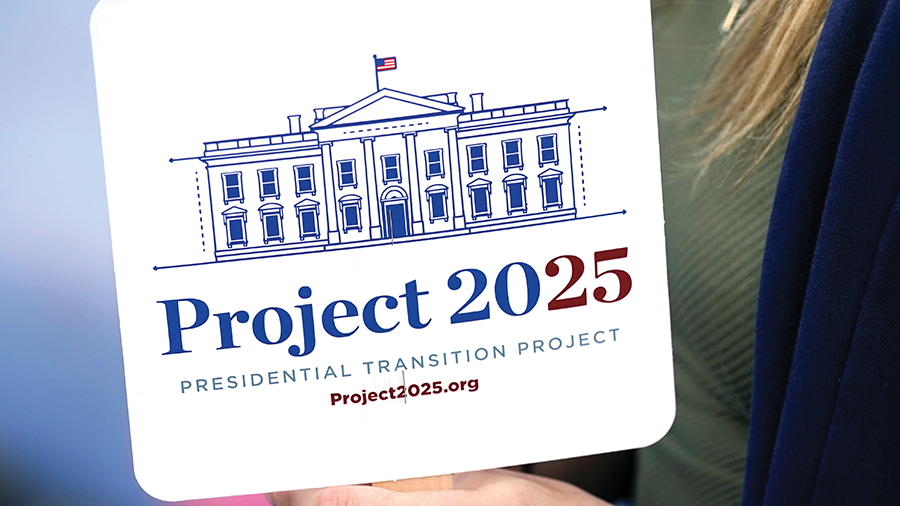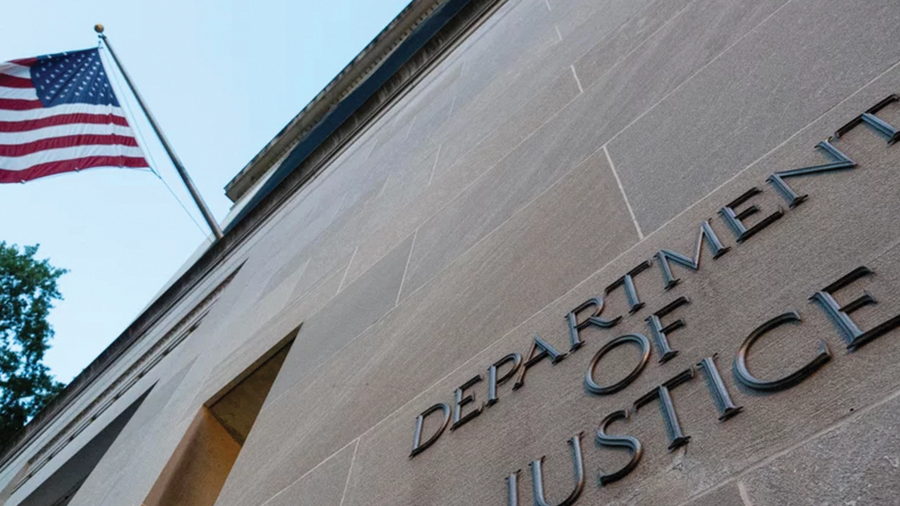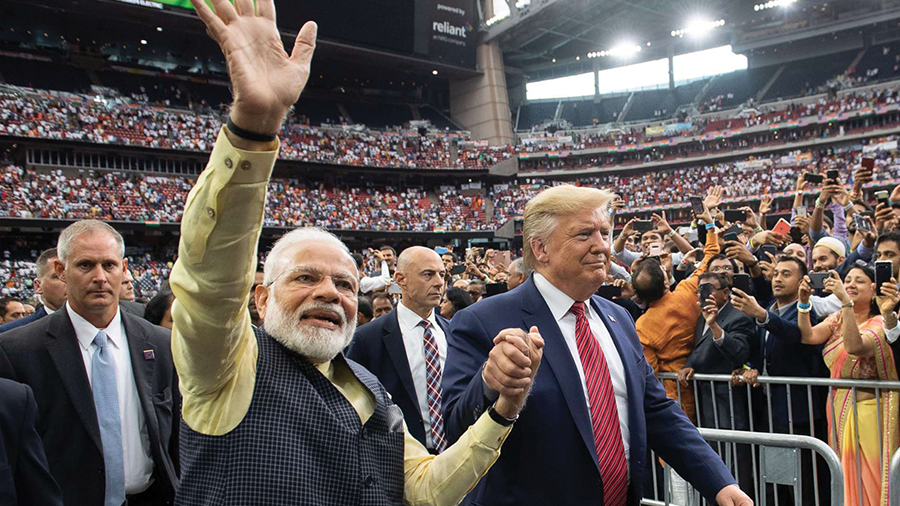
With former President Donald Trump defeating Vice President Kamala Harris in the race for the White House, there is a policy agenda crafted in the run-up to the election that its organizers say is ready for the next Republican to hold the presidency called “Project 2025”.
Project 2025 is an ambitious policy agenda developed by the Heritage Foundation, a leading conservative think tank, in preparation for the second term of Donald Trump as President of the United States. While Trump distanced himself from the project during his initial 2024 campaign, claiming a lack of formal affiliation, the policy document has gained considerable attention due to its sweeping proposals across all areas of governance. Its purpose is to redefine American politics, both domestically and internationally, by shifting the balance of power in favour of conservative principles while challenging established norms in governance, security, economics, and foreign policy.
The Heritage Foundation’s efforts to craft a detailed 900-page policy[i] manifesto called “Mandate for Leadership” began after the first year of Trump’s presidency, where approximately 64% of its recommendations were adopted. A fresh Mandate for Leadership[ii] has been released by the Heritage Foundation every four years since President Ronald Reagan assumed office in 1981. This close alignment between Trump’s administration and the Foundation’s proposals suggests that, under a second Trump term, Project 2025 could potentially reshape the political landscape of the U.S. profoundly.
Key Priorities of Project 2025
Border Security and Immigration Reform
A core element of Project 2025 is the completion of the border[iii] wall between the U.S. and Mexico. This proposal is rooted in the belief that securing the nation’s borders is essential to national security, public safety, and the enforcement of the rule of law. The project advocates for the deportation of millions of undocumented immigrants, including non-criminal undocumented individuals, which could lead to significant logistical challenges. Mass deportations would likely require substantial resources, including the military’s involvement, to carry out enforcement actions on a scale unseen in recent American history. Additionally, Project 2025 seeks to revise the existing immigration system by significantly reducing legal immigration through stricter visa limitations, including curtailing employment-based visa programs like the H-1B.
While the plan is positioned as a response to immigration-driven labour shortages, particularly in industries such as agriculture, construction, and technology, it may exacerbate workforce shortages. As immigrants, including undocumented ones, contribute billions in taxes and sustain vital industries, a large-scale reduction in immigration could disrupt U.S. productivity and economic stability, as pointed out by experts in the field. Immigrants are not only contributors to the labour force but also play a pivotal role in sustaining the social safety nets that support U.S. citizens.

Michigan State Sen. Mallory McMorrow brought out a large copy of Project 2025, what she described as a “Republican blueprint” for former President Trump’s potential second term. She warned those in attendance that the policies it lays out are “so much worse” than what they may have heard. (Image-NBC news)
De-Weaponizing the Federal Government
Project 2025 proposes sweeping reforms to federal agencies, with an emphasis on reducing the influence of what it terms the “deep state” and reestablishing control under elected leaders. This includes reshaping agencies such as the FBI[iv] and the Department of Justice (DOJ) to ensure they are more responsive to the President and Congress. The plan calls for a fundamental restructuring of these institutions to make them more accountable and less prone to partisan influence. One notable proposal includes creating a database akin to LinkedIn that would house the personal information of Trump’s supporters, with the aim of populating government positions with loyalists who align with Trump’s vision.

Signage is seen at the United States Department of Justice headquarters in Washington, Aug. 29, 2020. (Image-VOA)
Furthermore, the initiative champions the use of “Schedule F,” an executive order[v] signed by Trump in 2020, which reclassifies federal employees to make them easier to fire or replace. This order allowed Trump to reclassify a large swath of federal workers, thus making them more akin to political appointees than civil[vi] servants. Under Project 2025, this policy could be expanded, undermining the civil service system that has historically ensured the continuity and impartiality of federal agencies. These moves have been criticized for potentially increasing political interference in the functioning of key federal agencies.
Economic and Fiscal Policies
Project 2025’s economic vision centres on restoring fiscal discipline by curbing government spending, cutting taxes, and enhancing the country’s energy independence. The proposal advocates for an aggressive expansion of American energy production through measures like increasing offshore drilling and reducing restrictions on energy exploration on federal lands. By unleashing the nation’s vast energy resources, the project aims to lower energy prices, stimulate economic growth, and reduce reliance on foreign energy sources.
The plan also emphasizes the need to implement tax reforms that prioritize American businesses and citizens, while taking a hardline stance against government spending. However, critics argue that such sweeping cuts could exacerbate income inequality and leave essential public services underfunded. It’s also important to note that such policies could undermine the progress made toward renewable energy sources and climate change mitigation efforts.
Education and Social Policies
Education policy under Project 2025 seeks to return control of education to local communities by decentralizing the Department of Education. This shift would empower state and local governments to make decisions about curricula, educational standards, and funding, moving away from the current federal framework. Project 2025 also proposes cutting federal funding to public schools, in favor of private school vouchers that would allow parents to choose educational options for their children.
One of the more controversial elements of the project is its stance on gender and sports. It advocates for banning transgender women from competing in women’s sports, citing concerns about fairness and the preservation of biological categories in athletics. This stance has drawn strong opposition from LGBTQ+ rights groups, who view it as a direct attack on transgender rights.
Additionally, Project 2025 plans to dismantle diversity[vii], equity, and inclusion (DEI) initiatives, considering them divisive and discriminatory. The proposal suggests that these programs, which have gained prominence in both education and the workplace, promote a culture of “wokeness” that undermines meritocracy and traditional values.
Foreign Policy and International Relations
One of the more contentious aspects of Project 2025 is its focus on recalibrating U.S. foreign policy to prioritize American interests over international obligations. The agenda calls for a re-evaluation of the U.S.’s relationships with institutions such as the International Monetary Fund[viii] (IMF) and the World Bank, both of which have been criticized for promoting global economic policies that contradict American principles of free markets and limited government. Project 2025 proposes that the U.S. withdraw from these institutions and stop funding them altogether.
Trade policy also features prominently in the agenda, with a focus on reducing trade imbalances and renegotiating deals that benefit American workers. This protectionist approach may lead to further trade tensions, particularly with countries like India, which could see a reduction in its access to U.S. markets, especially in sectors like technology and manufacturing. Trump’s previous administration’s trade[ix] disputes with India were mostly caused by the two nations’ comparable trade policies. India and the United States still have significant trade imbalances with the rest of the globe. The early protectionist measures taken by the Modi government to promote “Make in India” ran counter to the export and manufacturing strategies of the Trump administration. Trump has emphasized bilateral trade deals in the past. A further attempt to resolve outstanding matters and negotiate a trade agreement with India[x] during a second term may concentrate on lowering tariffs, expanding market access, and correcting trade imbalances. A wider trade war might result from the U.S. and India intensifying punitive actions if unresolved trade disagreements continue. Stricter rules, increased tariffs, and limitations in important sectors like technology, agriculture, and medicines may all be part of this.

PM Narendra Modi with American President Donald Trump in this 2019 photo. People in India listening to Trump’s January 20 speech couldn’t help but notice the similarities in their ideas. (Image: India Today)
On the geopolitical front, Project 2025 proposes a more assertive U.S. military presence worldwide, with an emphasis on modernizing nuclear capabilities. This could fuel an arms race, particularly in regions where U.S. adversaries like Russia and China are also increasing their military investments. The project’s endorsement of increased defence spending and the development of new military technologies, including intercontinental ballistic missiles and nuclear weapon testing, could escalate tensions with rivals.
Although Trump[xi] has not yet addressed Israel’s ongoing conflicts against Iran-backed Hamas in the Gaza Strip and Hezbollah in Lebanon, he has implied that he can put a swift end to the conflict in the centre of the Middle East. As the European continent enters the bloodiest fight since World War II, Trump will assume the role of U.S. commander-in-chief. Russia’s full-scale invasion of Ukraine set off a nearly three-year war, which he has claimed he can finish before he ever takes office. He has made repeated public demands that some of America’s closest and longest allies fulfil their NATO membership pledge to allocate at least 2% of their yearly GDP to defence spending. Trump charged certain partners with taking advantage of NATO’s collective guarantee.
National Security and Defense
National security remains one of the central pillars of Project 2025, which advocates for a significant increase in military spending. The plan calls for a stronger military presence both domestically and abroad, and it emphasizes the need for a more modernized and technologically advanced U.S. defence force. This includes expanding cyber defence capabilities to protect critical infrastructure from cyberattacks, but it also raises concerns over the balance between national security and civil liberties.
Project 2025’s approach to intelligence agencies includes reorganizing them to align more closely with the administration’s objectives. While this could streamline decision-making and enhance national security, critics worry that such changes might compromise the independence of intelligence operations, making them more susceptible to political influence.
Environmental Policies
One of the most controversial aspects of Project 2025 is its sweeping proposals to roll back environmental protections. The project calls for gutting the Endangered[xii] Species Act (ESA), repealing the Antiquities Act and weakening the Clean Air Act. These changes would significantly reduce the federal government’s ability to protect wildlife, public lands, and air quality.
Proponents of Project 2025 argue that such measures are necessary to reduce bureaucratic red tape and promote economic development. However, environmental groups warn that dismantling these laws would have dire consequences for biodiversity and the long-term health of the planet. Critics also point out that the rollback of environmental protections undermines the U.S.’s ability to combat climate change and fulfil its international environmental commitments.
Impact on Women, Minorities, and LGBTQ+ Rights
Project 2025’s stance on social issues is aligned with conservative values, emphasizing the preservation of the traditional family structure and challenging progressive social movements. It proposes a rollback of policies that protect the rights of women, LGBTQ+ individuals, and minorities, particularly in areas such as healthcare, education, and employment. The dismantling of DEI programs and the potential restriction of LGBTQ+[xiii] rights could exacerbate divisions in U.S. society and lead to significant pushback from advocacy groups.
Conclusion
Project 2025 represents a transformative and highly ambitious agenda for a second Trump administration. Its proposals span a wide range of areas, including immigration, federal governance, economic policy, education, foreign relations, and defence. While it promises to restore what its supporters view as American greatness and a return to traditional values, the potential consequences of these policies are profound.
Whether these initiatives will lead to greater American prosperity or contribute to social divisiveness, economic instability, and international tensions remains to be seen. The success or failure of Project 2025 could redefine U.S. politics and its role on the world stage for years to come.
[i] Durkee, A. (2024, October 4). Project 2025 Explained: What to know about the Right-Wing Policy Map ahead of tonight’s VP debate. Forbes. https://www.forbes.com/sites/alisondurkee/2024/10/01/project-2025-explained-what-to-know-about-the-right-wing-policy-map-ahead-of-tonights-vp-debate/
[ii] Roberts, K. D., PhD. (n.d.). The stories Democrats tell about Project 2025 | The Heritage Foundation. The Heritage Foundation. https://www.heritage.org/conservatism/commentary/the-stories-democrats-tell-about-project-2025
[iii] Project 2025 | presidential transition project. (n.d.-a). https://www.project2025.org
[iv] Wendling, M. (2024, September 11). What is Project 2025? Wish list for a Trump presidency, explained. https://www.bbc.com/news/articles/c977njnvq2do
[v] Shao, E., & Wu, A. (2024, October 22). The many links between project 2025 and Trump’s World. The New York Times. https://www.nytimes.com/interactive/2024/10/22/us/politics/project-2025-trump-heritage-foundation.html
[vi] Sebastian, S. (2024, August 25). What is Project 2025? Dems raise alarm about GOP blueprint, Trump says he knows nothing. The Week. https://www.theweek.in/news/world/2024/08/25/what-is-project-2025-dems-raise-alarm-about-gop-blueprint-trump-says-he-knows-nothing.html
[vii] Mallinder, L. (2024, July 11). What could Project 2025 mean for the rest of the world? Al Jazeera. https://www.aljazeera.com/features/2024/7/10/what-does-project-2025-mean-for-the-world
[viii] Sward, J. (2024, October 16). Project 2025 takes on the World Bank and IMF – harbinger of an uncertain new era of geopolitics?Bretton Woods Project. https://www.brettonwoodsproject.org/2024/10/project-2025-takes-on-the-world-bank-and-imf-harbinger-of-an-uncertain-new-era-of-geopolitics/
[ix] Rossow, R. M. (n.d.). U.S.-India under Trump 2.0: A return to reciprocity. CSIS. https://www.csis.org/analysis/us-india-under-trump-20-return-reciprocity
[x] Rajachander, H. (2024, October 22). How will Project 2025 impact Indian immigrants in a Trump administration? India Currents. https://indiacurrents.com/how-will-project-2025-impact-indian-immigrants-in-a-trump-administration/
[xi] Watson, K., Quinn, M., Reals, T., Rosen, J., Kates, G., & Montoya-Galvez, C. (2024, November 9). What could Trump’s second term bring? Deportations, tariffs, Jan. 6 pardons and more. CBS News. https://www.cbsnews.com/news/second-trump-presidency-implication/
[xii] Hao, S. (2024, November 12). What Project 2025 would do to the environment – and how we will respond. Earthjustice. https://earthjustice.org/article/what-project-2025-would-do-to-the-environment-and-how-we-will-respond
[xiii] Hemming, R. (2024, August 16). Project 2025: The security and societal Consequences of Trump’s return to power — The Security Distillery. The Security Distillery. https://thesecuritydistillery.org/all-articles/project-2025-the-security-and-societal-consequences-of-trumps-return-to-power
Leave a Reply